elemintalshop
Khan Krum the Fearsome Hunts Lion 5 Leva Bulgaria Authentic Coin Money for Jewelry and Craft Making (1930) (Tsar Boris III)
Khan Krum the Fearsome Hunts Lion 5 Leva Bulgaria Authentic Coin Money for Jewelry and Craft Making (1930) (Tsar Boris III)
Couldn't load pickup availability
Khan Krum the Fearsome Hunts Lion 5 Leva Bulgaria Authentic Coin Money for Jewelry and Craft Making (1930) (Tsar Boris III)
Reverse: Krum the Fearsome (Khan of Bulgaria in 803-814) on horseback hunts lion with a dog. [The word "krum" in Bulgarian means "stone".]
Script: Cyrillic
Lettering: КРУМЪ
814
Translation: KRUM
814
Obverse: Denomination above date and country name within wreath.
Script: Cyrillic
Lettering: 5 ЛЕВА
1930
БЪЛГАРИЯ
Translation: 5 Leva
1930
Bulgaria
Edge: Reeded
Features
Issuer Bulgaria
King Boris III (1918-1943)
Type Standard circulation coin
Year 1930
Value 5 Leva (5 BGO)
Currency First lev (1881-1952)
Composition Copper-nickel
Weight 7.75 g
Diameter 26.13 mm
Thickness 1.85 mm
Shape Round
Technique Milled
Orientation Medal alignment ↑↑
Demonetized Yes
Number N# 6445
References KM# 39, Schön# 39
Horse, Lion, Dog
That's Krum the Fearsome (Khan of Bulgaria c. 803 to 814) on horseback killing a lion with his dog at his side. Krum would die the same year as the scene on this coin. The image of a rider killing a lion shows up on later Bulgarian coins, but it is a different scene. The later image is the Madara Rider, based on a cliff carving of events that took place in the period 701 to 801 CE. Perhaps when Krum came along, he had to act out the same scene, as it was expected of leaders at the time. Or, maybe the later image is Krum when he was younger. This coin was minted in 1930 only.
Source: http://www.coinzoo.net/europe-world-coin-collection/item/bulgaria-5-leva-km39
**********
Wikipedia:
Krum (Bulgarian: Крум, Greek: Κρούμος/Kroumos)[A], often referred to as Krum the Fearsome (Bulgarian: Крум Страшни) was the Khan of Bulgaria from sometime between 796 and 803 until his death in 814. During his reign the Bulgarian territory doubled in size, spreading from the middle Danube to the Dnieper and from Odrin to the Tatra Mountains. His able and energetic rule brought law and order to Bulgaria and developed the rudiments of state organization.
....Conflict with Nikephoros I
Krum engaged in a policy of territorial expansion. In 807 Bulgarian forces defeated the Byzantine army in the Struma valley. In 809 Krum besieged and forced the surrender of Serdica, slaughtering the garrison of 6,000 despite a guarantee of safe conduct. This victory provoked Byzantine Emperor Nikephoros I to settle Anatolian populations along the frontier to protect it and to attempt to retake and refortify Serdica, although this enterprise failed.
In early 811, Nikephoros I undertook a massive expedition against Bulgaria, advancing to Marcellae (near Karnobat). Here Krum attempted to negotiate on July 11, 811, but Nikephoros was determined to continue with his plunder. His army somehow avoided Bulgarian ambushes in the Balkan Mountains and made its way into Moesia. They managed to take over Pliska on July 20, as only a small, hastily assembled army was in their way. Here Nikephoros helped himself to the treasures of the Bulgarians while setting the city afire and turning his army on the population. A new diplomatic initiative from Krum was rebuffed.
The chronicle of the 12th-century patriarch of the Syrian Jacobites, Michael the Syrian, describes the brutalities and atrocities of Nikephoros: "Nikephoros, emperor of the Byzantine empire, walked into the Bulgarians' land: he was victorious and killed great number of them. He reached their capital, seized it and devastated it. His savagery went to the point that he ordered to bring their small children, got them tied down on earth and made thresh grain stones to smash them."
While Nikephoros I and his army pillaged and plundered the Bulgarian capital, Krum mobilized as many soldiers as possible, giving weapons even to peasants and women. This army was assembled in the mountain passes to intercept the Byzantines as they returned to Constantinople. At dawn on July 26, the Bulgarians managed to trap the retreating Nikephoros in the Vărbica pass. The Byzantine army was wiped out in the ensuing battle and Nikephoros was killed, while his son Staurakios was carried to safety by the imperial bodyguard after receiving a paralyzing wound to the neck. It is said that Krum had the Emperor's skull lined with silver and used it as a drinking cup.
... Legacy
Krum was remembered for instituting the first known written Bulgarian law code, which ensured subsidies to beggars and state protection to all poor Bulgarians. Drinking, slander, and robbery were severely punished. Through his laws he became known as a strict but just ruler, bringing Slavs and Bulgars into a centralized state.
*******
Wikipedia:
Boris III (Bulgarian: Борѝс III; 30 January [O.S. 18 January] 1894 – 28 August 1943), originally Boris Klemens Robert Maria Pius Ludwig Stanislaus Xaver (Boris Clement Robert Mary Pius Louis Stanislaus Xavier), was the Tsar of the Kingdom of Bulgaria from 1918 until his death in 1943.
The eldest son of Ferdinand I, Boris assumed the throne upon the abdication of his father in the wake of Bulgaria's defeat in World War I. Under the 1919 Treaty of Neuilly, Bulgaria was forced to, amongst other things, cede various territories, pay crippling war reparations, and greatly reduce the size of its military. That same year, Aleksandar Stamboliyski of the agrarian Bulgarian Agrarian National Union became prime minister. After Stamboliyski was overthrown in a coup in 1923, Boris recognized the new government of Aleksandar Tsankov, who harshly suppressed the Bulgarian Communist Party and led the nation through a brief border war with Greece. Tsankov was removed from power in 1926, and a series of prime ministers followed until 1934, when the corporatist Zveno (Bulgarian: Звено movement staged a coup and outlawed all political parties. Boris opposed the Zveno government and overthrew them in 1935, eventually installing Georgi Kyoseivanov as prime minister. For the remainder of his reign, Boris would rule as a de facto absolute monarch, with his prime ministers largely submitting to his will.
Following the outbreak of World War II, Bulgaria initially remained neutral. In 1940, Bogdan Filov replaced Kyoseivanov as prime minister, becoming the last prime minister to serve under Boris. Later that year, with the support of Nazi Germany, Bulgaria received the region of Southern Dobrudja from Romania as part of the Treaty of Craiova. In January 1941, Boris approved the anti-Semitic Law for Protection of the Nation, which denied citizenship to Bulgarian Jews and placed numerous restrictions upon them. In March, Bulgaria joined the Axis. In exchange, Bulgaria received large portions of Macedonia and Thrace, both of which were key targets of Bulgarian irredentism. Boris refused to participate in the German invasion of the Soviet Union and largely resisted German attempts to deport Bulgarian Jews as part of the Holocaust. In 1942, Zveno, the Agrarian National Union, the Bulgarian Communist Party, and various other far-left groups united to form a resistance movement known as the Fatherland Front, which would later go on to overthrow the government in 1944. In August 1943, shortly after returning from a visit to Germany, Boris died at the age of 49. His six-year-old son, Simeon II, succeeded him as tsar.
Share
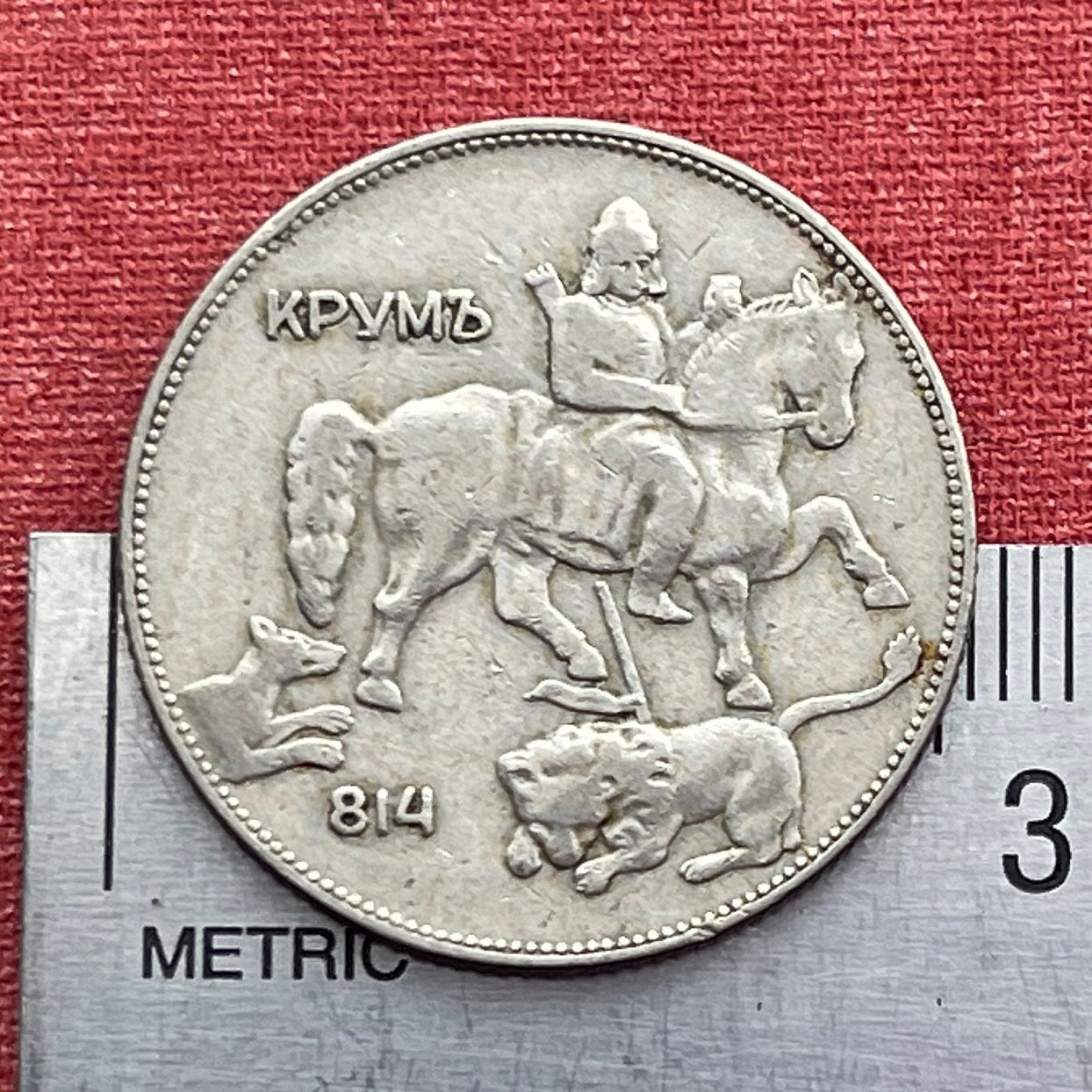
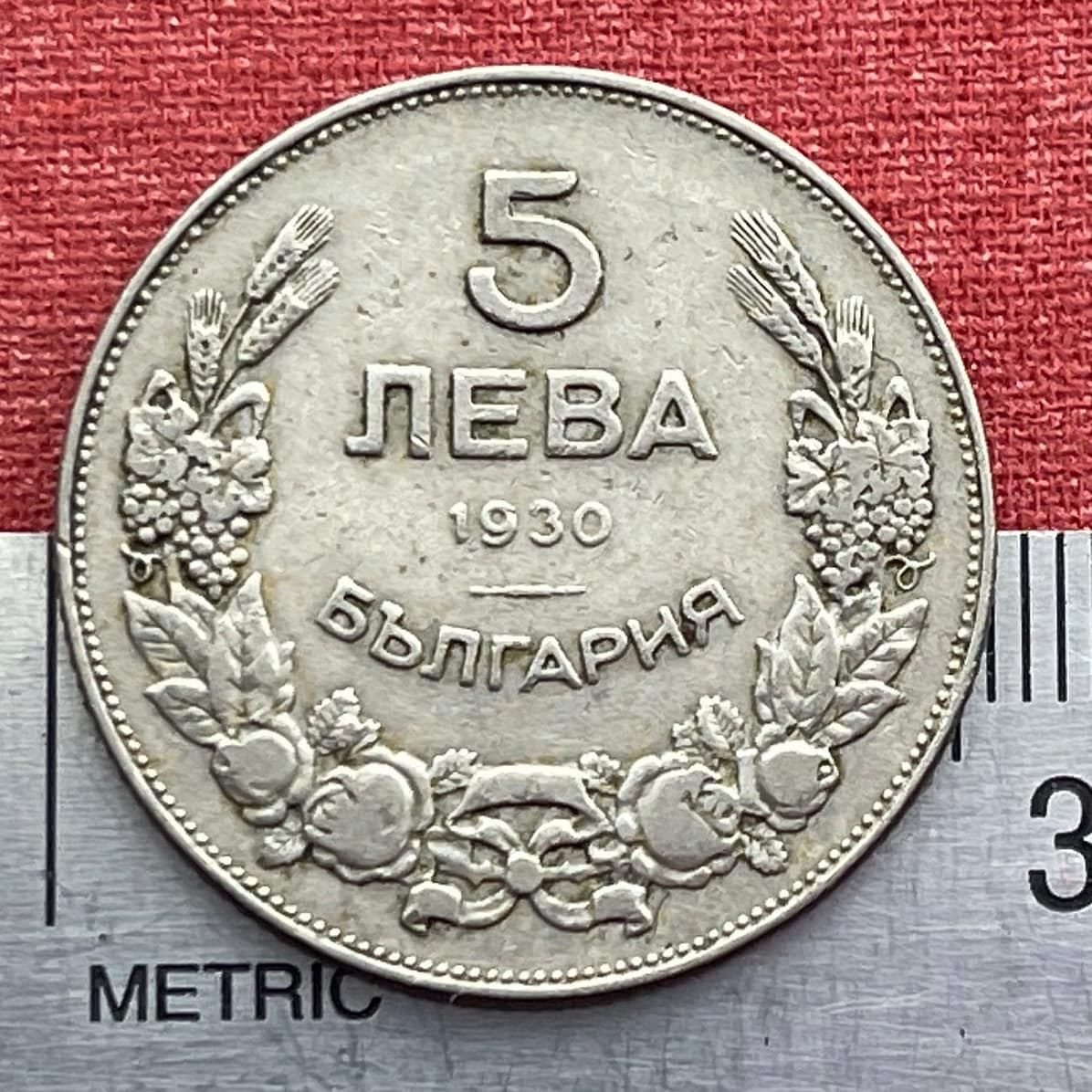
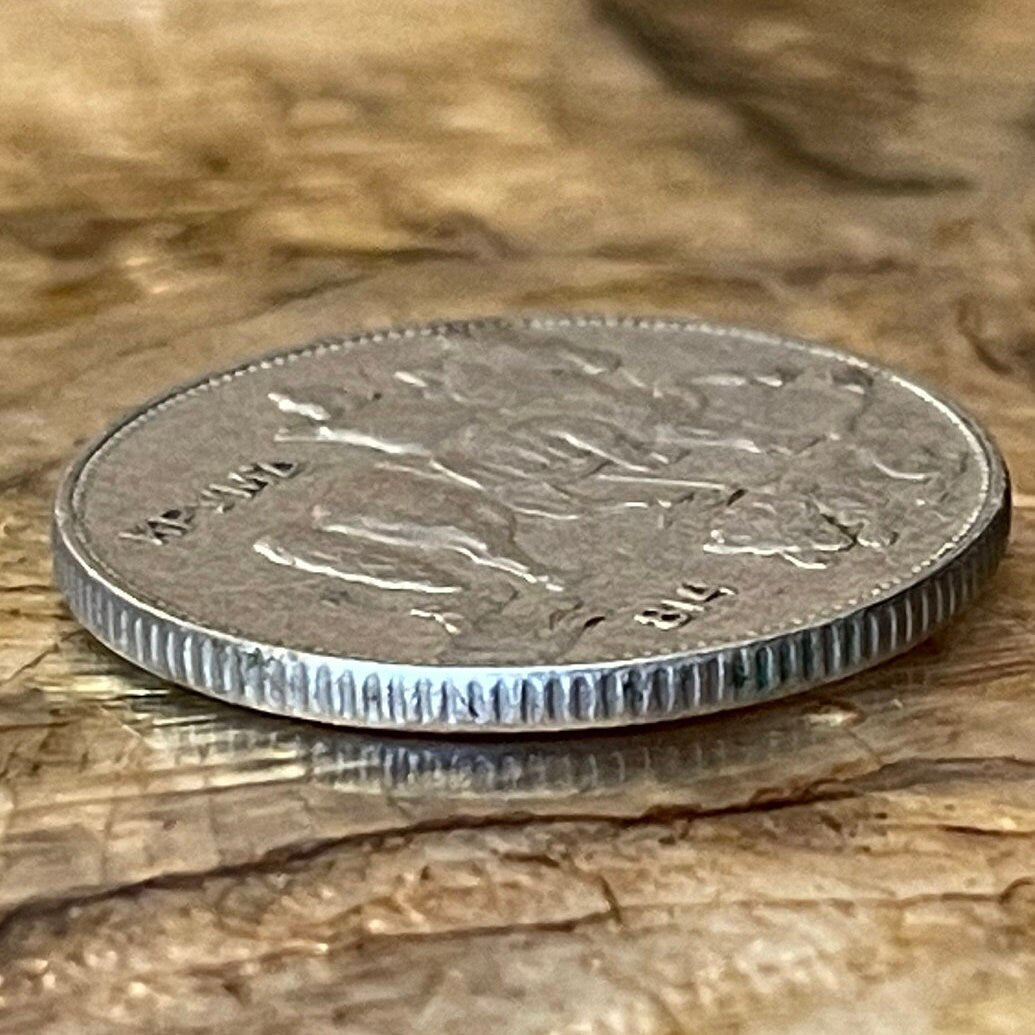
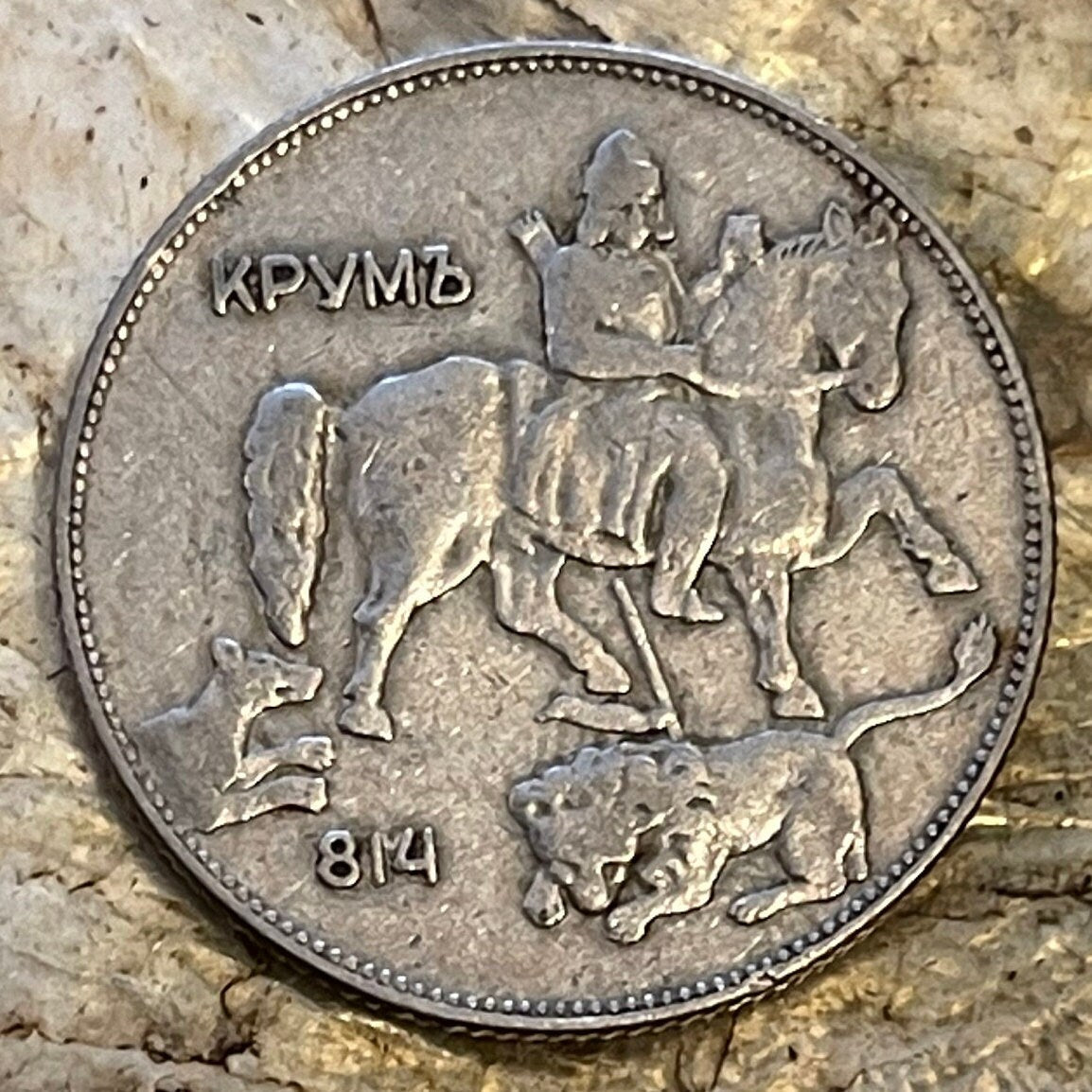
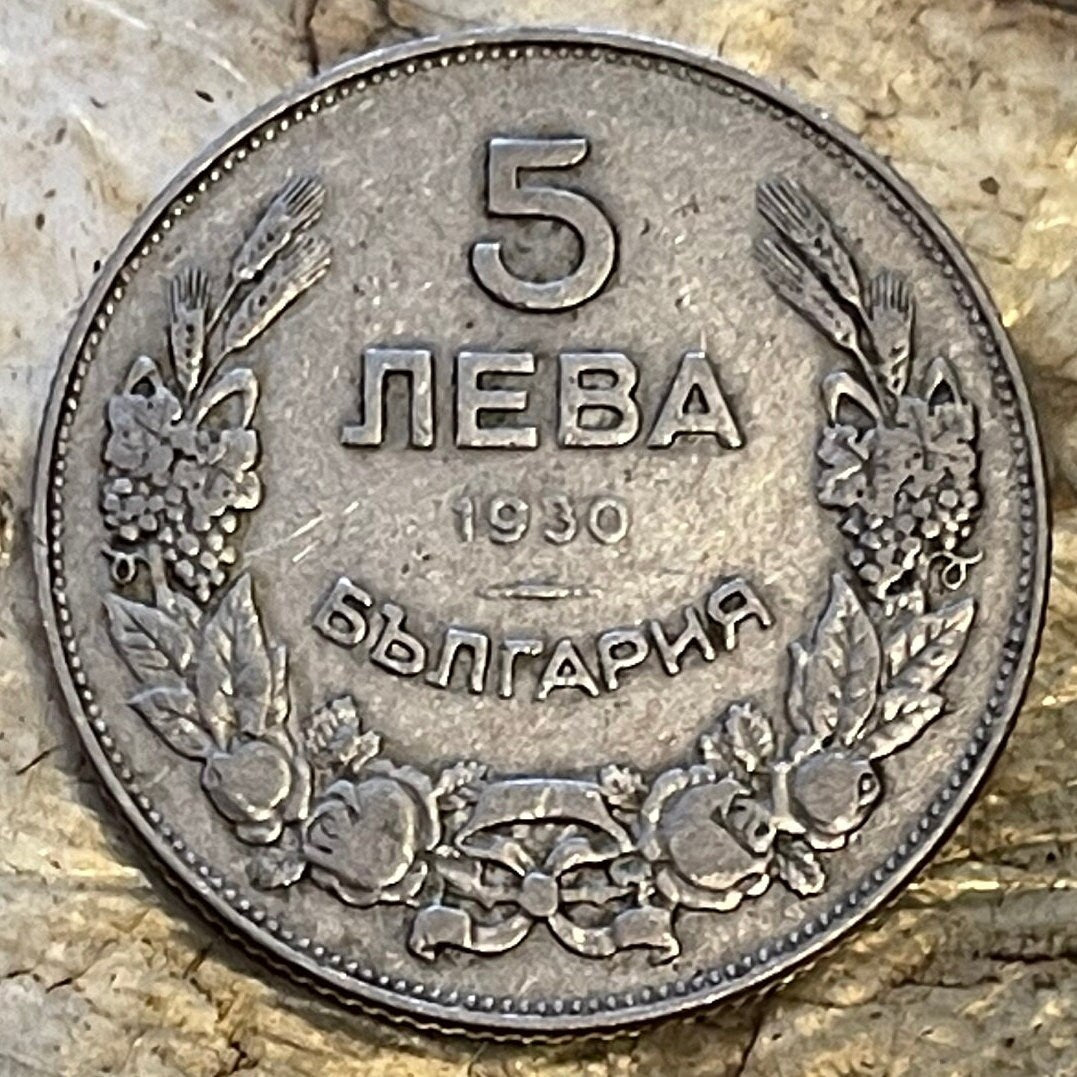
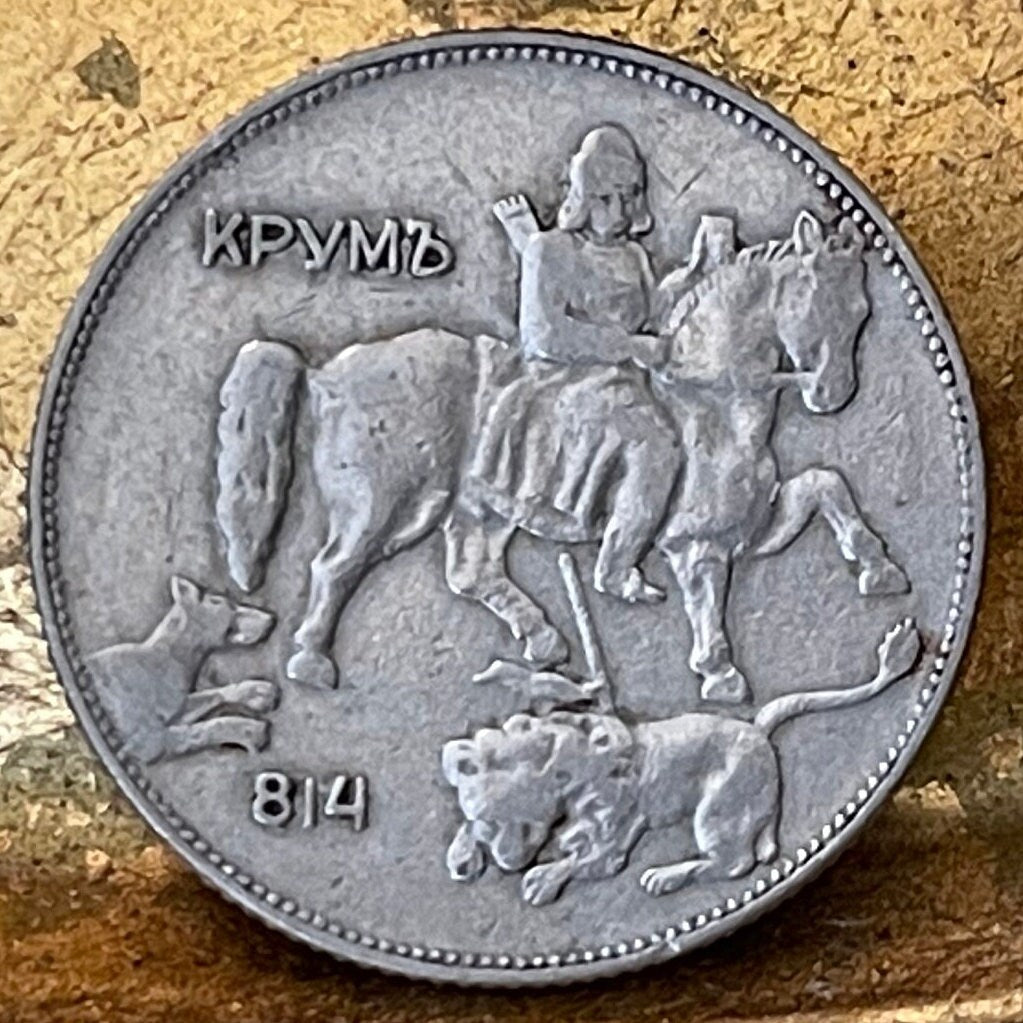
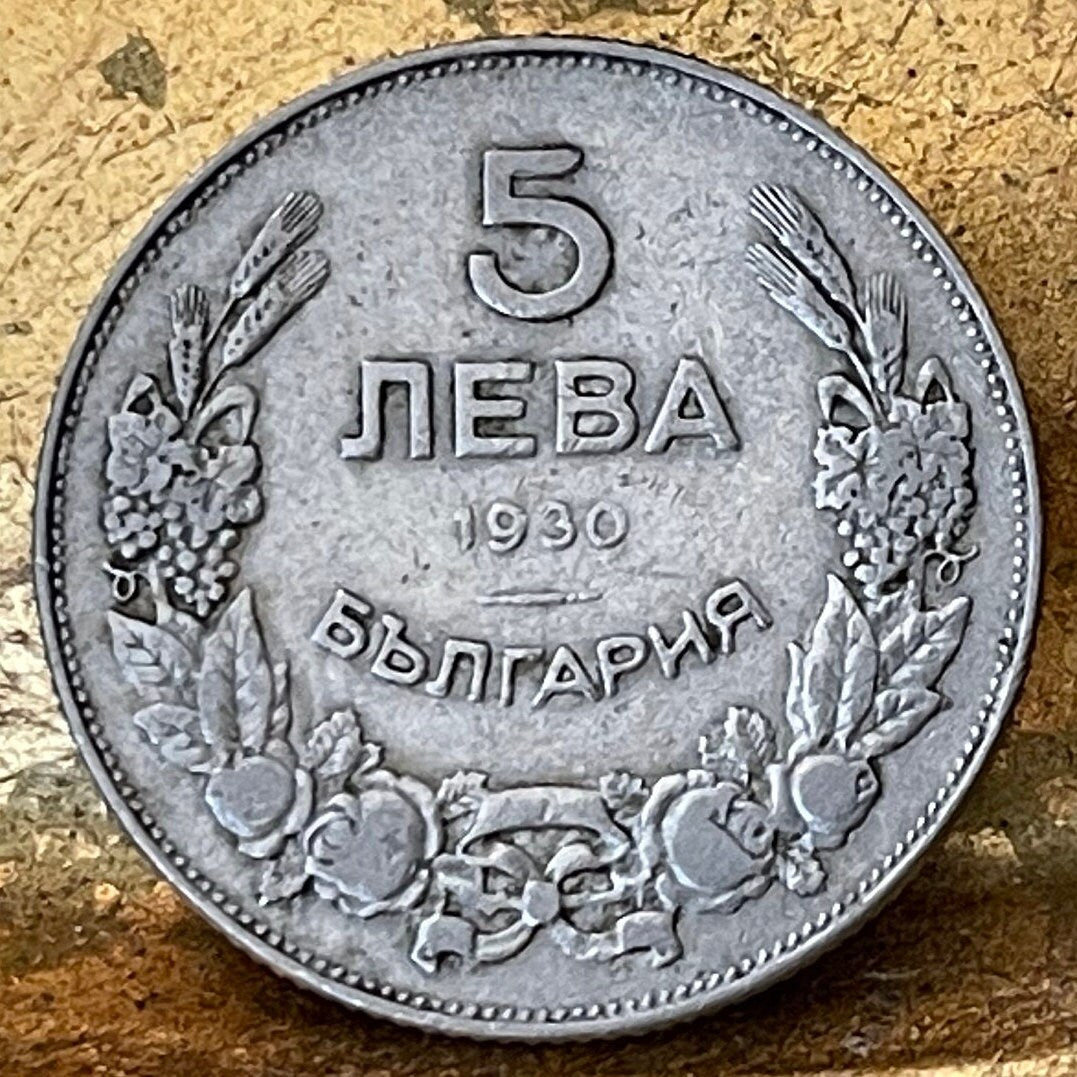
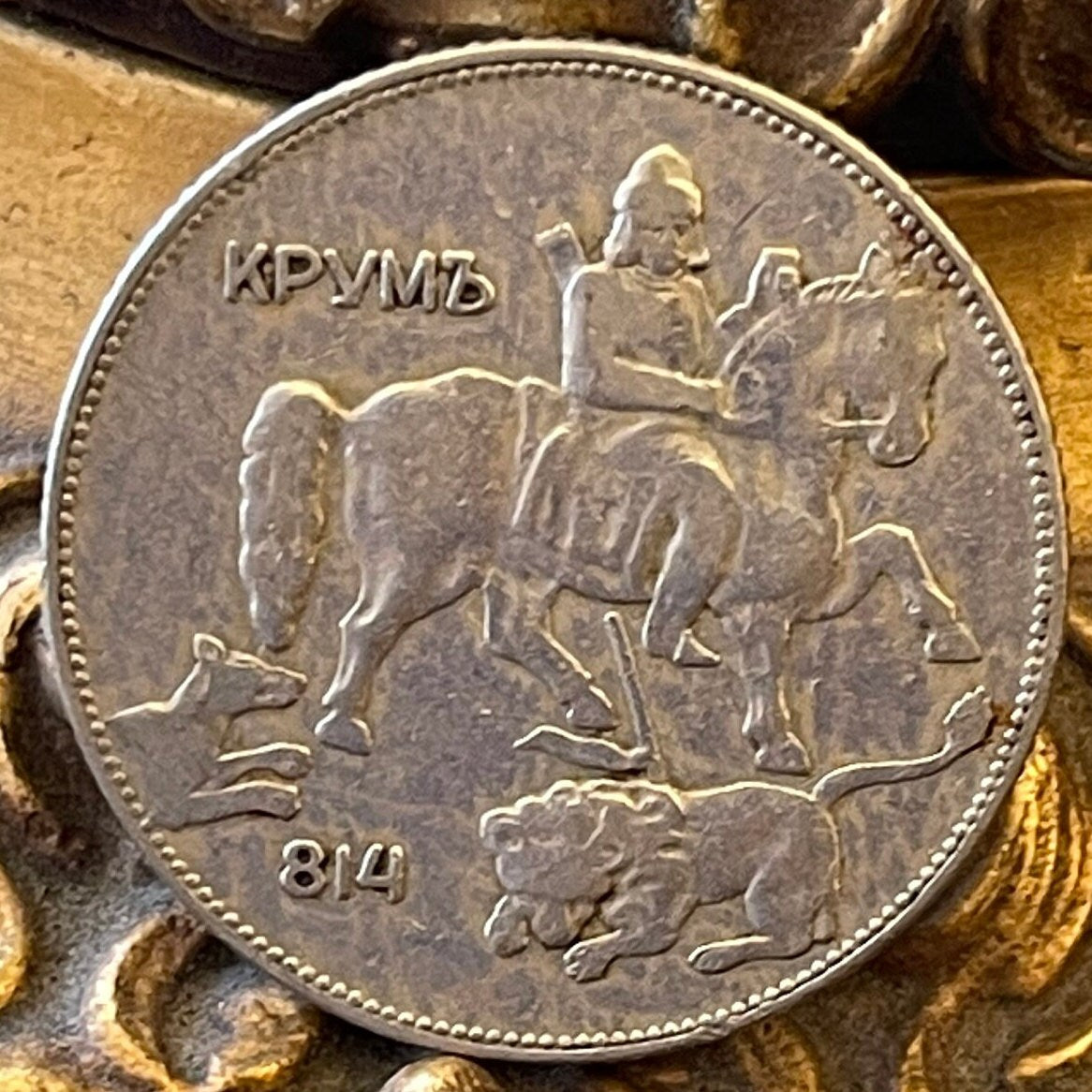
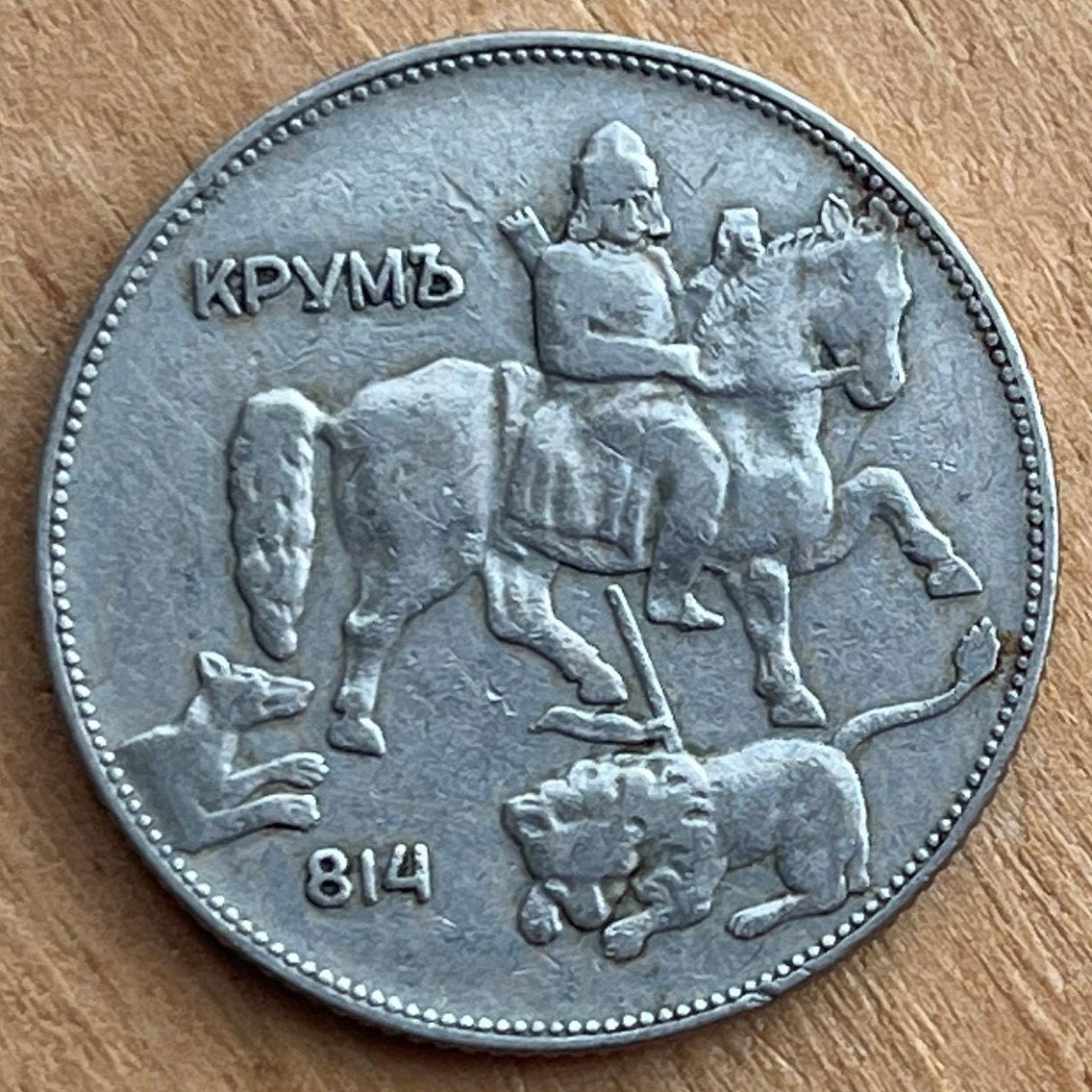
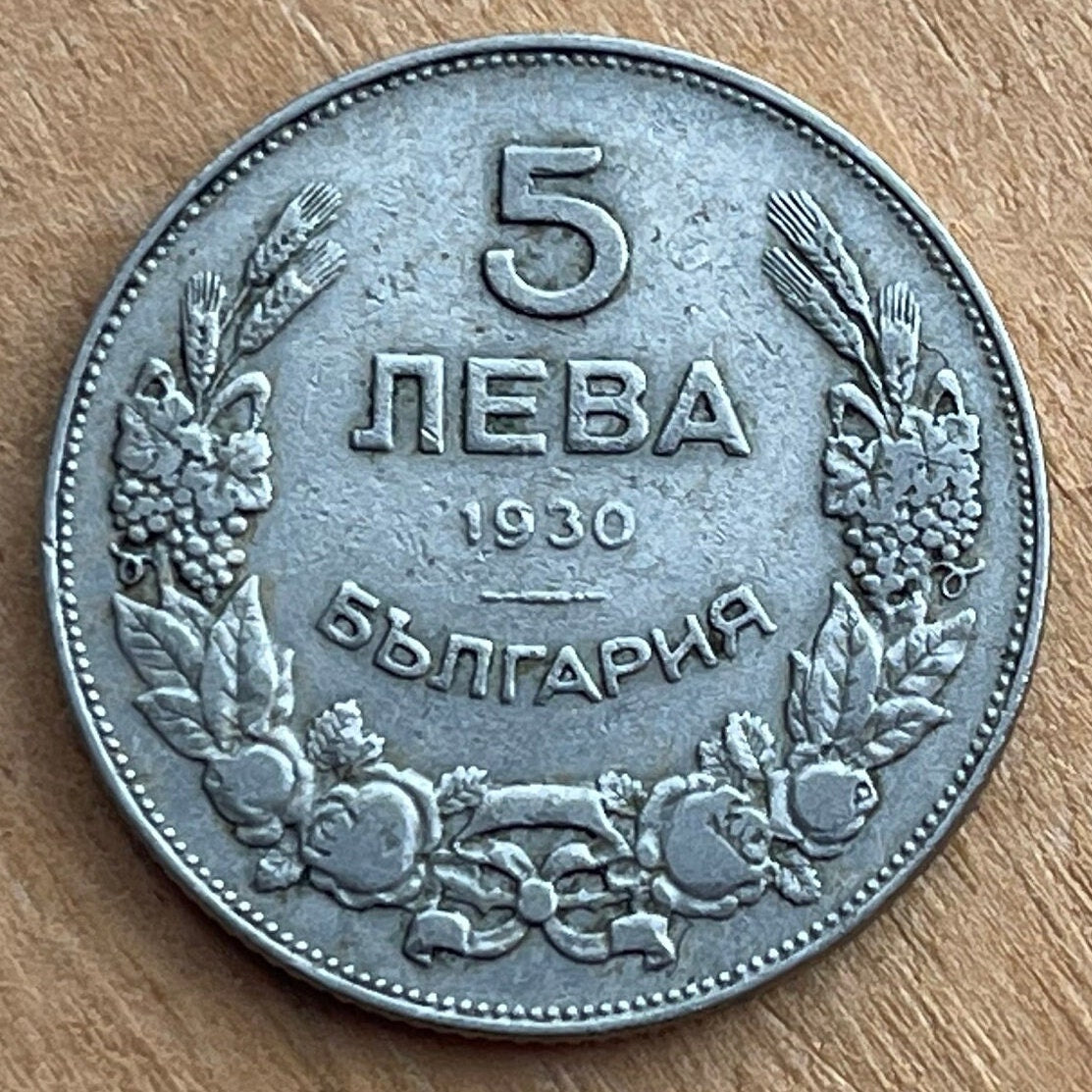
A lovely coin for my collection! Glad to find it in your store!
Fast shipping Highly recommended
The coin is as described
Very meaningful coin! Glad to find it in your store!
1930 coin well worn but had to add to my collection
5 stars review from Dawn









